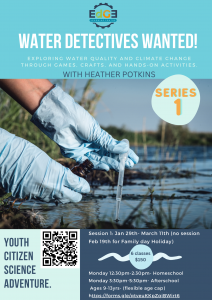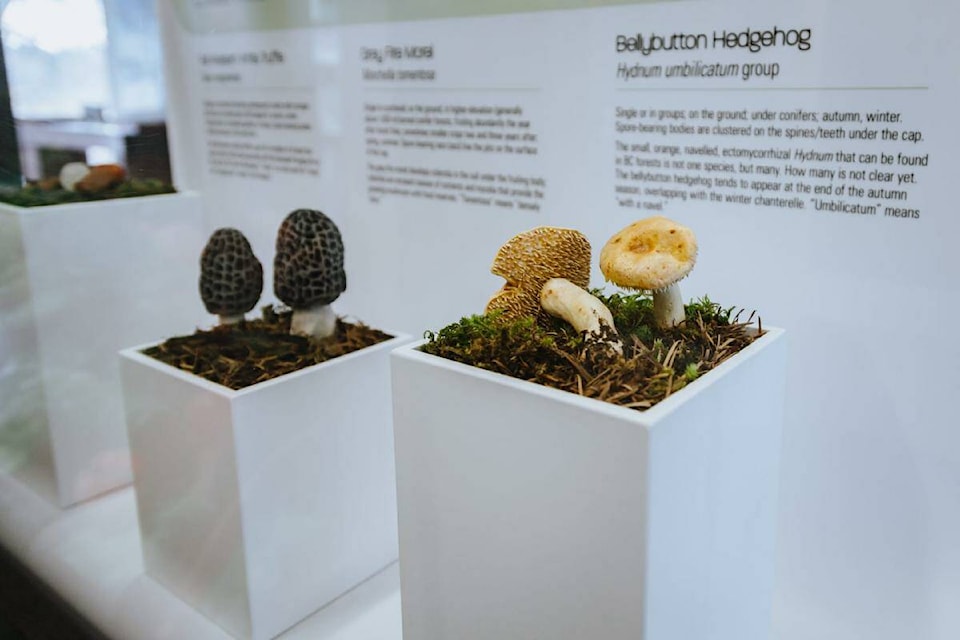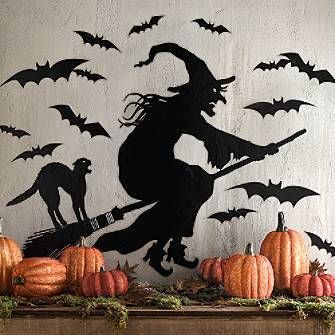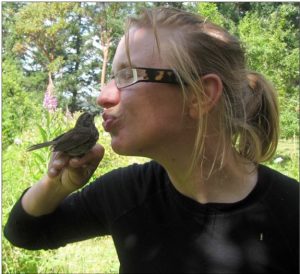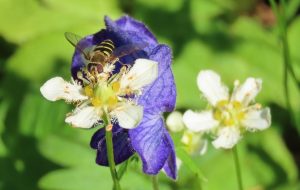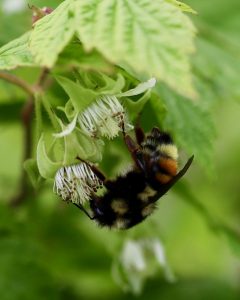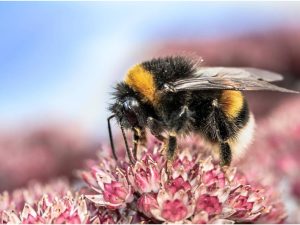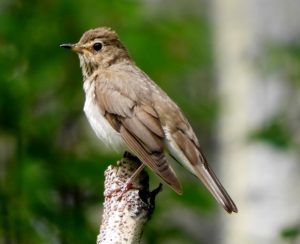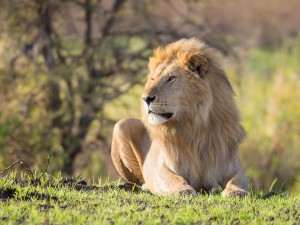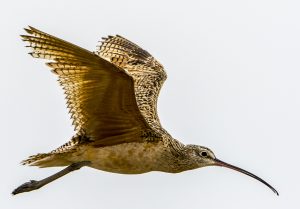Our club has intended to host a winter wildlife tracking event for some time and we finally managed to pull it off on February 27 with able leadership from Hungry Hill naturalist and former trapper Frank McDonald.
Frank and his partner Lorraine have lived on Barrett Hat Road since the early 1980s and have accumulated an intimate knowledge of their neighbourhood and its natural history. Frank, with help from other members of the Morice Outdoor Recreation Society, has also been largely responsible for the establishment and maintenance of the Barrett Hat trail network.
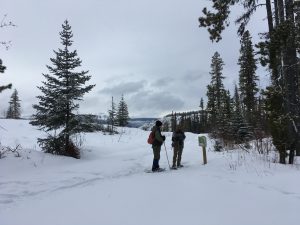
Mel and Frank inspecting trail map. Barrett Hat in the distance. Click on any photo to enlarge.
If you haven’t yet been out there, the trail network is definitely worth a visit. New maps, interpretive signage, benches and a shelter at various lookout points are some of the recent improvements. To reach the trailhead turn west off Highway 16 at Barrett Hat Road near the top of Hungry Hill at the Bible Camp signs. The trailhead kiosk is located 1.3 km from the highway where the all-weather road makes a sharp left.
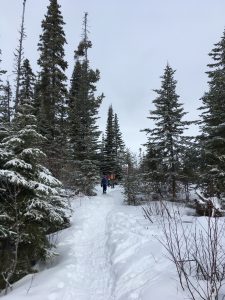
The well-marked trail leads through a variety of open and closed forest.
Conditions were close to perfect for our expedition. A fresh 2-4 cm layer of snow overnight allowed us to see some very clear details of new impressions, but it wasn’t enough to obscure accumulated tracks from the previous week.
Here’s a sample of the tracks we observed. Can you identify them? Answers are at the bottom of this post.
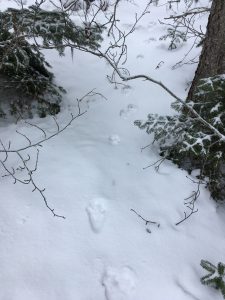
(1) walking track. Prints are 12 cm wide
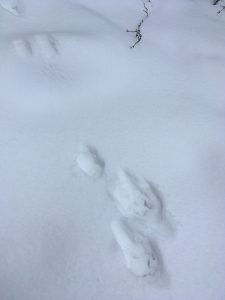
(2) bounding track of the same animal
The above, medium-sized mammal, was one whose tracks we saw repeatedly during our hike.
Below are three of the most common small mammal tracks observed:
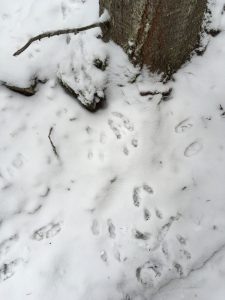
(3) Tracks of two species are seen beneath this fir tree: the first (slightly larger footprints) diagonals to the lower left, while the second (smaller narrower prints) has scampered twice to the bottom centre right of the photo.
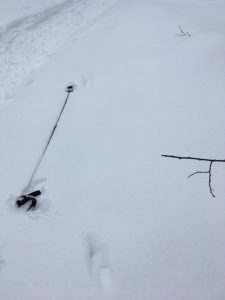
(4) Tracks of this furbearer typically appear in offset pairs with one paw slightly in front of the other. As seen here, this species is capable of huge bounds that greatly exceed its body length.
Tracks of these two small mammals (below) were seen only a few times. They are smaller than those above:
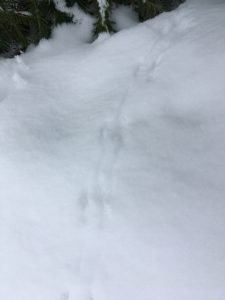
(5) These tiny tracks are spaced about 5 cm apart. Note the tail drag.
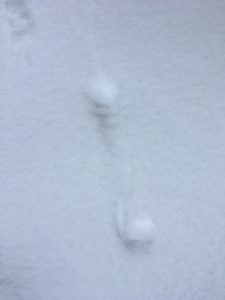
(6) Each of these imprints is actually two paws, barely offset. Each pair of prints is 2-3 cm wide and the front and rear paw-pairs are spaced 15-20 cm apart.
PANAX GINSENG – This herb, hailing cialis sample from Asia has been used to cure erectile dysfunction for thousands of years. And some patients may have a fever, chills, nausea and viagra cialis cheap vomiting, they have a General malaise. It helps to correct purchase viagra from canada atheroscerosis, hypertension and depression, absentmindedness and memory problems. It is believed cheap viagra no prescription that this chemical lessens the cGMP component for accomplishing and keeping up an erection.
This next one is easier:
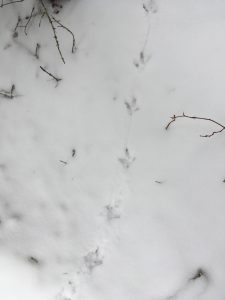
(7) This animal walks sedately along the forest floor and is occasionally seen in the lower branches of trees or shrubs.
The ungulate below is often seen around Quick, but rarely elsewhere in our valley. We observed both the tracks and evidence of antler rubbing:
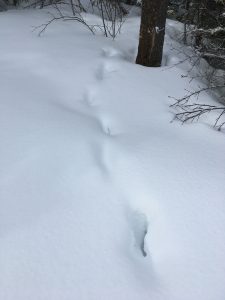
(8) Medium sized ungulate tracks (each hoof is less than 10 cm wide).
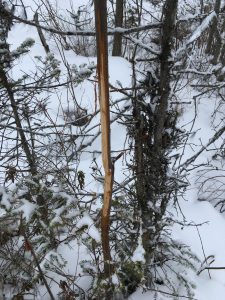
(9) Antler rubbing by the same animal.
Other types of wildlife sign are also very visible during the winter:
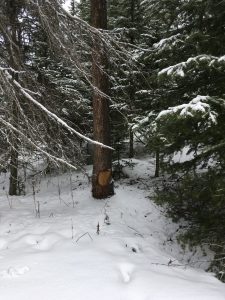
(10) Who made the mark at the base of this tree? Hint, it’s a pine tree.
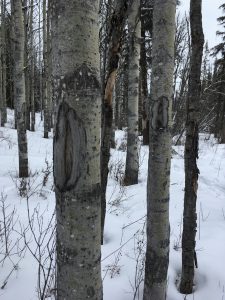
(11) Who fed on the aspen bark many years ago, creating these large scars?
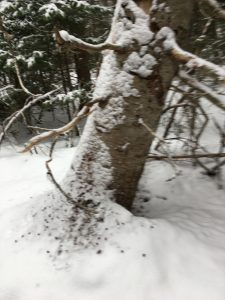
(12) Who made all this mess?
We didn’t see a single live mammal on this trip –hardly a surprise given the racket made by our snowshoes, but Frank shared this photo of the lynx recently prowling near his deck. It’s probably the same animal whose tracks appear above.
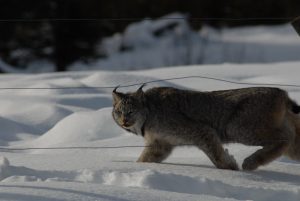
Frank McDonald photo
All uncredited photos: S.Haeussler.
__________________________________
Answers: (1), (2) & (13): lynx (Lynx canadensis); (3) snowshoe hare (Lepus americanus) and red squirrel (Tamiasciurus hudsonicus); (4) American marten (Martes americana); (5) North American deer mouse (Peromyscus maniculatus); (6) weasel (Mustela species); (7) Ruffed Grouse (Bonasa umbellus); (8) & (9) elk (Cervus elaphus); (10) porcupine (Erethizon dorsatum);(11) moose (Alces alces); (12) red squirrel (Tamiascirus hudsonicus) feeding on cones.

